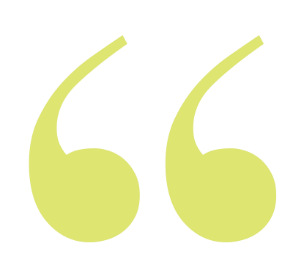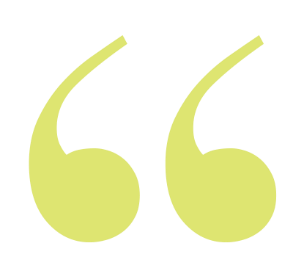Simon Sinek encourages us to start with “why”. His Ted Talk (Start with Why)[23] highlights the importance of beginning with this understanding, to help everything else fall into place. So let us start there.
 |
Pause to Reflect
WHY do you want to work with young children?
|
The way that you answered will have much to do with how you move forward. It will help you define your core beliefs about working with young children, the type of program you will feel comfortable in; how you will approach your career and the tasks you will prefer doing. Revisit your “why” often and use it wisely to guide you.
 |
New Teacher Comment
“The first time I watched Simon Sinek I was blown away!
Whenever I am not sure how to proceed, I go back to my “why.”
When I went on job interviews, some places “felt” like a better place than others to work, a better “fit”. I realized that was my “why” guiding me.
I use “why” as a starting place for guiding behavior. I begin by listing all of the reasons a child might behave a certain way and plan from there.”
|
While you will have an individual “why”, the field of early childhood education also has a collective “why” that guides our work. Almost every profession has an organizing body that unifies its members’ voices. The National Association for the Education of Young Children (NAEYC), established in 1926 and always evolving, is the premier professional organization for those working with young children and families. We encourage you to visit their website naeyc.org to view the many resources available to you, including articles, books, research, conferences, and position statements. Because there are so many individual “whys”, rather than telling professionals specifically what to do in every situation, NAEYC has compiled two statements that broadly define our unified early childhood “why”.
The first is a Code of Ethical Conduct, which lays the foundation for “why” we behave as we do are provided in the NAEYC Statement of Commitment:
As an individual who works with young children, I commit myself to further the values of early childhood education as they are reflected in the ideals and principles of the NAEYC Code of Ethical Conduct. To the best of my ability, I will:
- Never harm children.
- Ensure that programs for young children are based on current knowledge and research of child development and early childhood education.
- Respect and support families in their task of nurturing children.
- Respect colleagues in early childhood care and education and support them in maintaining the NAEYC Code of Ethical Conduct.
- Serve as an advocate for children, their families, and their teachers in community and society.
- Stay informed of and maintain high standards of professional conduct.
- Engage in an ongoing process of self-reflection, realizing that personal characteristics, biases, and beliefs have an impact on children and families.
- Be open to new ideas and be willing to learn from the suggestions of others.
- Continue to learn, grow, and contribute as a professional.
- Honor the ideals and principles of the NAEYC Code of Ethical Conduct. [24]
 |
New Teacher Comment
“I was amazed at how much I use the ethical guidelines. At least once a week I run into an issue with a child, parent, or co-worker that is not a straightforward right and wrong. This code helps me put things into perspective and handle them in a professional manner, especially as a new teacher.
When a coworker approached me with juicy gossip about another coworker, I quickly informed her that if that coworker wanted me to know she would tell me herself, no need to talk behind her back. Straight from the Code of Conduct! Boom!
I find these 2 documents blends nicely. When I am faced with planning curriculum, I can look at what is developmentally appropriate and then justify it further by considering it ethically.
Our teaching team has found that planning by using Developmentally Appropriate Practices makes for a happy, healthy classroom of children well prepared to embrace life and learning.
I whole-heartedly agree that what teachers do is the single most important factor in the classroom!”
|
The second set of guiding principles compiled through years of research on how young children develop and learn, lay a foundation for the general practices we use when planning, implementing, and reflecting up interactions and experiences in our programs. Again, rather than a step-by-step guide on exactly what to do in every situation, these “Developmentally Appropriate Practices” highlight the “whys” that guide what we do with young children. The content presented in this textbook is based on these principles, which include:
Practices that:
- Are appropriate to children’s age and developmental stages, attuned to them as unique individuals, and responsive to the social and cultural contexts in which they live.
- Include comprehensive, effective curriculum incorporating knowledge that all domains of development interrelate.
- Embed what is known about the interrelationships and sequences of ideas, so that children’s later abilities and understandings can be built on those already acquired.
- Know that both child-guided and teacher-guided experiences are vital to children’s development and learning.
- Understand that rather than diminishing children’s learning by reducing the time devoted to academic activities, play promotes key abilities that enable children to learn successfully.
- Hold critical that a teacher’s moment-by-moment actions and interactions with children are the most powerful determinant of learning outcomes and development. Curriculum is very important, but what the teacher does is paramount.
- Ensure that for teachers are able to provide care and education of high quality, they must be well prepared, participate in ongoing professional development, and receive sufficient support and compensation.
- Realize that children are part of families and communities and that partnerships between home and school are crucial. [25]
 |
Pause to Reflect
How does your personal WHY fit into this collective WHY?
|






